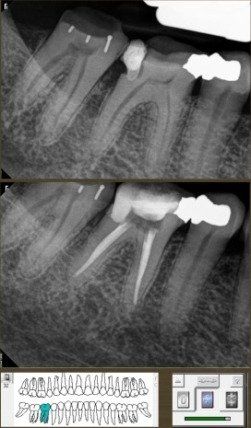After we welcome you to the office, we will help you create your electronic dental record, which includes your medical history and consent forms. Please bring a list of all the medications (over-the-counter and prescription) that you regularly/have taken within the past month, and your referral slip. Once all forms are complete, an assistant will review and chart your chief complaint, referring dentist’s information and history of the tooth pain before taking x-rays of your teeth.
Dr Meade will make you aware of the benefits, options and risks involved in order for you to understand how endodontic treatment is a way of saving your tooth. Clinical testing will be done on the affected tooth to arrive at a diagnosis. This process starts with a digital x-ray of the tooth. The tooth is then tested for pain while biting, palpation, percussion, cold, and heat sensitivity. The doctor will assess the mobility of the tooth and the health of the surrounding gum tissue. It is highly important NOT TO TAKE PAIN MEDICATION PRIOR TO YOUR APPOINTMENT. Taking pain medication may mask your symptoms, therefore making your clinical tests invalid.
An estimate will be given to you explaining your insurance benefits and financial responsibilities. Although we always do our best to ensure this information is accurate, we are not able to guarantee this estimate due to the nature of dental insurance comanies and their contracts. You may contact your insurance company if you would like more details.
If you decide to receive treatment, the procedure may start immediately. Before treatment begins, you will receive local anesthesia to numb any sensations you may feel during the procedure. If the procedure is unable to be completed within one visit, medicine may be placed inside the tooth between appointments.
Once your procedure is complete, more x-rays are taken to track the success of the treatment. You will receive a post-treatment letter with instructions and indications of what to expect over the next few days.


